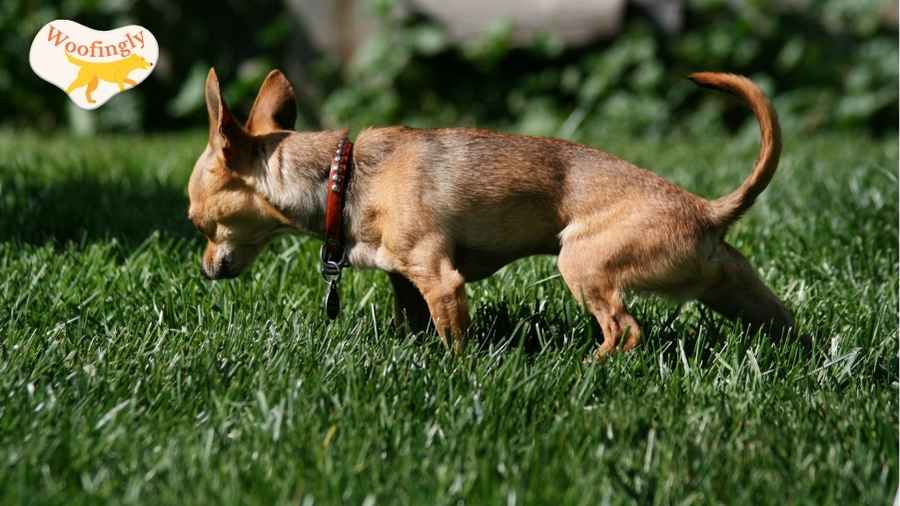One of the biggest challenges dog owners face is when their dog keeps peeing inside the house. It’s not just inconvenient. It can lead to stress, unpleasant odors, and even damage to your home.
Understanding how to train a dog to pee outside is not about using harsh discipline or complicated tricks. It’s about building a clear routine, using positive reinforcement, and knowing how much water do dogs need to help time bathroom breaks effectively.
Whether you’ve just brought home a new puppy or you’re helping an older dog adjust to a new environment, the principles of outdoor potty training remain the same.
Over the years, I’ve helped hundreds of dog owners create simple, effective training plans that work. In this guide, I’ll walk you through proven steps that will help you build good bathroom habits with your dog.
If you’re looking for real results and a cleaner, happier home, learning how to train a dog to pee outside is the essential first step. Let’s begin with what truly matters.
Understanding Your Dog’s Natural Behavior
Before diving into the steps of how to train a dog to pee outside, it’s important to understand your dog’s instincts. Dogs are creatures of habit. They prefer to go to the bathroom in the same spots and respond well to routines.
Puppies, especially, have limited bladder control, and most need frequent bathroom breaks. Adult dogs, depending on breed and size, can typically hold it for longer but they still need consistency to learn.
Recognizing the signals that your dog needs to go is critical. Most dogs show signs like sniffing the ground, pacing, circling, or whining. Some will head toward the door or bark. Learning to identify these cues will help you respond quickly and avoid accidents inside.
Set a Consistent Potty Schedule
Routine is everything when house-training a dog. Dogs thrive on structure. Creating a schedule allows your dog to anticipate bathroom breaks and builds habits faster.
Here’s a simple potty schedule that works well for most dogs:
| Time of Day | Activity |
|---|---|
| First thing in the morning | Take your dog outside immediately after waking up |
| After meals | Wait 5–10 minutes after eating, then go outside |
| After naps | Puppies often need to pee right after waking up |
| After playtime | Physical activity stimulates the bladder |
| Before bedtime | A final trip outside reduces overnight accidents |
| Every 1–2 hours (puppies) | Frequent breaks prevent accidents and build habit |
Stick to this routine every day. The more consistent you are, the quicker your dog will learn that outside is the right place to go.
Choose a Potty Spot
Pick a specific area in your yard or near your home where you want your dog to pee. Always lead them to that same spot during bathroom trips. Dogs rely heavily on scent. When they smell their previous waste, it signals to them that this is an acceptable bathroom area.
Use a verbal cue like “Go potty” or “Do your business” each time you bring your dog to that spot. Eventually, your dog will associate the command with the action.
Use Positive Reinforcement
One of the most effective ways to teach how to train a dog to pee outside is through positive reinforcement. Every time your dog pees outside in the correct spot, reward them immediately. Use treats, praise, or a favorite toy to create a positive association.
Timing is crucial. You must reward your dog right after they finish peeing outside—not after you go back indoors. This way, your dog clearly understands that they did the right thing and will want to repeat the behavior.
Avoid punishment for accidents. Yelling or rubbing their nose in it can cause fear and anxiety, which can make the problem worse. Focus on praising the good instead of punishing the bad.
Crate Training Can Help
Crate training is an effective way to prevent indoor accidents and teach your dog to hold their bladder. Dogs instinctively avoid soiling their sleeping area. A properly sized crate gives your dog a safe space and helps reinforce potty training.
Make sure the crate is just big enough for your dog to stand up, turn around, and lie down comfortably. Too much space can lead them to pee in one corner and sleep in another.
Use the crate when you’re unable to supervise your dog closely. Take them out as soon as you open the crate and guide them to the potty spot. Reward them for going outside.
Keep Supervision Strong Indoors
Until your dog is fully trained, you need to supervise them closely when inside. Don’t give too much freedom too quickly. Use baby gates or keep them in the same room with you. If you can’t watch them directly, consider using a leash indoors or placing them in their crate.
This level of supervision allows you to catch accidents before they happen and redirect your dog outside. Over time, you can increase their freedom as they learn to stay clean inside.
Clean Accidents Properly
If your dog does have an accident indoors, clean it thoroughly with an enzymatic cleaner. These cleaners break down the odor at a molecular level so your dog doesn’t return to the same spot again.
Regular cleaners or soap may not fully remove the smell, even if it seems clean to you. If your dog smells urine, they may think it’s okay to pee there again. Cleaning properly helps reinforce that the house is not a bathroom.
Know When to Ask for Help
While most dogs respond well to consistent training, some may take longer due to past trauma, medical issues, or stubborn behavior. If you’ve followed the steps and still struggle with progress, it’s okay to ask for help.
A certified dog trainer or animal behaviorist can assess the situation and offer customized guidance. A vet visit is also a good idea if you suspect a medical problem like a urinary tract infection or incontinence.
Common Mistakes to Avoid
Training your dog to pee outside can go wrong if you’re not careful. Here are a few things to avoid:
- Inconsistent schedule: Skipping potty times confuses your dog.
- Punishing accidents: Creates fear and may lead to hiding behavior.
- Letting your dog roam unsupervised: Makes it harder to catch mistakes.
- Not rewarding outside behavior: Missed opportunities to reinforce good habits.
- Using the wrong cleaner: Leaves behind scent cues that encourage repeat accidents.
Avoiding these mistakes will make the process smoother and less stressful for both you and your dog.
Benefits of Outdoor Potty Training
Learning how to train a dog to pee outside doesn’t just make your life easier, it also benefits your dog. A consistent potty routine promotes physical health, reduces anxiety, and strengthens your bond. Outdoor trips also give your dog a chance to explore, sniff, and enjoy the environment, which are important parts of their daily mental stimulation.
A well-trained dog is more welcome in public places, rental homes, and even when staying with friends or family. It shows that you’re a responsible owner and gives your dog more freedom and trust.
Final Tips for Success
- Be patient and positive. Every dog learns differently.
- Celebrate small wins. Even one successful trip outside is progress.
- Track your dog’s behavior in a journal or app.
- Watch for patterns in accidents they usually happen at predictable times.
- Stick with the training even after success to make the habit permanent.
With the right strategy, consistency, and care, you’ll succeed in teaching your dog how to train a dog to pee outside and enjoy a cleaner, happier home life.
FAQs
How long does it take to train a dog to pee outside?
The time it takes can vary based on your dog’s age, breed, and past experiences. Most puppies can learn within a few weeks if you’re consistent. Older dogs may take longer, especially if they’ve developed bad habits. Daily routine, patience, and positive reinforcement are key factors in how quickly your dog learns to pee outside.
What should I do when my dog has an accident inside?
Stay calm and never punish your dog. Clean the area thoroughly with an enzyme-based cleaner to remove the scent. If you catch your dog in the act, gently interrupt them and take them outside immediately. Reward them if they finish peeing outside. This helps reinforce the right behavior and keeps your dog from becoming fearful or confused.
How often should I take my dog outside to pee?
Puppies need to go out every 1–2 hours during the day, especially after meals, naps, or play. Adult dogs typically go every 4–6 hours. Always take your dog out first thing in the morning and before bed. Consistency in timing helps your dog build a reliable bathroom schedule and learn to wait for outdoor trips.
Should I use pee pads while training my dog to pee outside?
Pee pads can be helpful for young puppies or during extreme weather, but they may slow down outdoor potty training. Dogs can get confused about where it’s okay to go. If your goal is to teach your dog to pee outside only, it’s best to skip pads and focus on outdoor trips, using praise and treats for positive reinforcement.
How do I know when my dog needs to go outside?
Watch for signs like sniffing around, circling, whining, or standing by the door. Some dogs may pace or bark. Puppies often need to go shortly after eating or drinking. The more you observe your dog’s behavior, the easier it will be to spot these signals and take them out before they have an accident inside.
Final Thoughts
Training your dog to pee outside is one of the most important steps in building a well-behaved and happy pet. While accidents may happen in the beginning, staying calm, consistent, and patient will lead to success over time. Every dog learns at their own pace, but with a solid routine and lots of praise, your dog will quickly understand what you expect.
Remember, knowing how to train a dog to pee outside isn’t just about stopping messes in the house. It’s about building trust, communication, and healthy habits that last a lifetime. Make sure to take your dog out regularly, reward good behavior, and watch for signs they need to go.
With the right approach, you’ll have a clean home and a confident, well-trained dog. If you follow the steps and remain consistent, you’ll master how to train a dog to pee outside and enjoy a much smoother life with your furry friend.







Leave a Reply